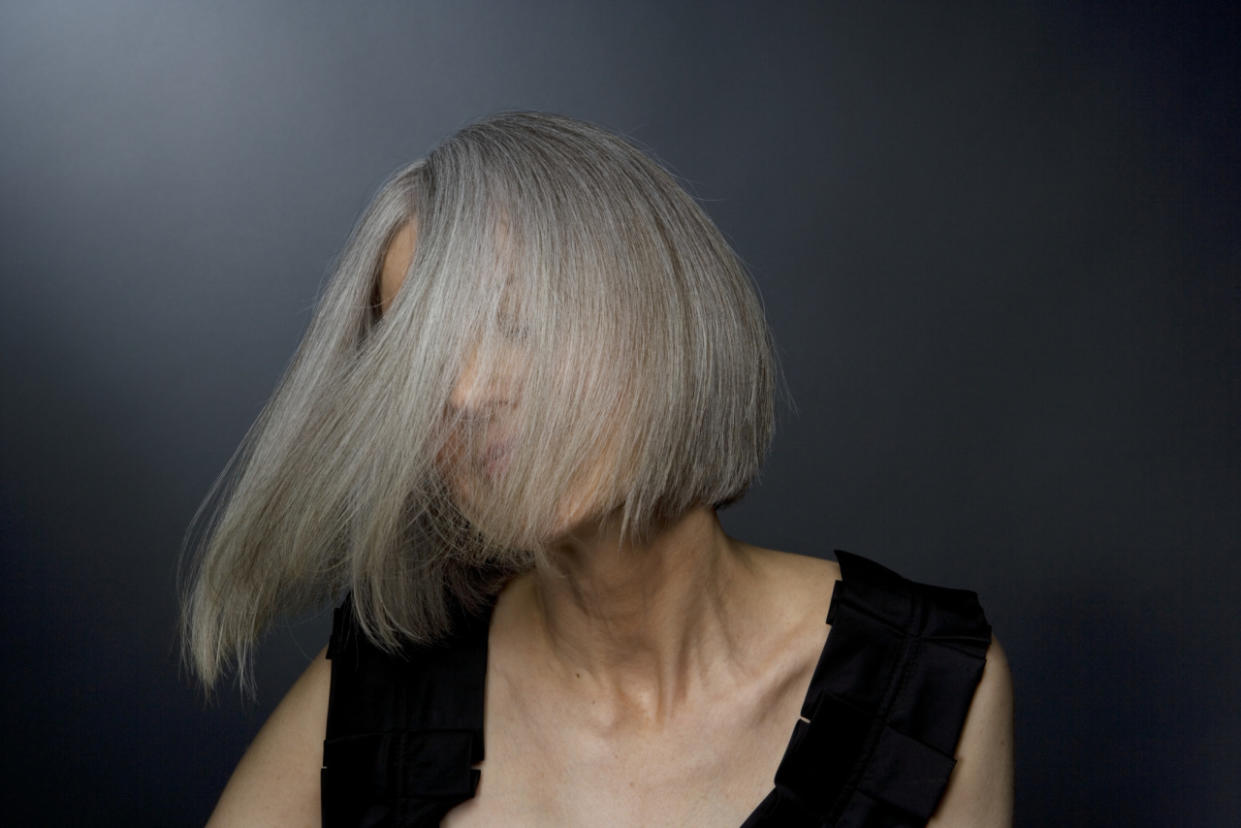The biggest grey hair myths debunked

Thinkstock
If turning grey is weighing heavily on your mind, you’ve come to the right place.
It’s something we all have to go through, and whether you choose to embrace your greys, or colour them, is totally up to you. Over the past few years grey and silver hair has been having a fashion moment. But although beauty bloggers and A-listers of all ages like Ellie Goulding and Jamie Lee Curtis have been seen sporting gorgeous grey locks, many women still opt to cover them up.
If you have a newly minted head of greys, it’s normal to feel overwhelmed. There are common misconceptions and old wives’ tales surrounding your new hair colour that can be down right confusing.
To debunk grey hair myths once and for all, I called on Dino Tolentino, co-founder of Toronto’s Salon Solis, and colour expert with over two decades of experience.
Here’s what he had to say about your greys.
Colouring grey hair
Since the texture of grey hair is coarser than your natural strands, Tolentino explains that it’s more resistant to dye. And since there are often two different colours of hair, it makes the dyeing process a little more complicated.
“When your hair is 50 per cent grey and your natural colour is, let’s say, light brown, the product will suck up the colour in two different ways,” Tolentino says. “When people colour their hair sometimes it doesn’t cover the greys, so they think it didn’t take, but that’s not the case.”
Covering your greys with the right colour all depends on your natural shade. You have to work with your unique colour combination to figure out which dye strength and tone will work best for covering your entire head of hair.
ALSO SEE: The biggest hair misconceptions
Is temporary dye strong enough?
Tolentino says temporary dye typically isn’t strong enough to cover greys, so using a permanent colour is best.
He suggests Davines – which he has been using on his clients for 10 years, however stresses that it’s really up to you in terms of what product you want to use.
When it comes to the dyeing process itself, it’s best to leave it the professionals, though. They can figure out what shade will work best for you, and they can apply the product properly.
“When you do it yourself at home, even if you’re using professional dye, you can’t apply the product properly,” Tolentino warns. “You will notice a difference – it still works, but you’re not going to be putting it on properly.”
And no, don’t worry, he assured me that contrary to the common myth, excessive dyeing does not lead to more grey hair.
The truth about plucking
We’ve all heard it before – pluck one grey hair and seven will grow back in its place. That’s not true, but according to Tolentino plucking is one of the worst things you can do to your greys.
“If you keep plucking as you become more grey, the hair becomes more coarse,” he cautions. “What happens is, when you age, you get more greys and eventually you can’t keep up with plucking them all, so it results in little, wiry spikes that will be shorter than the rest of your hair.”
ALSO SEE: This common mistake could be the reason your hair is thinning
Why does hair turn grey in the first place?
Grey hair is mostly hereditary, and according to Tolentino it turns grey because there is no longer any melanin in the hair. This means that your hair will have a more transparent colour as it grows and as you age.
“[Greying] is part of the aging process 95 per cent of the time,” he explains.
And the myth that stress causes greys? True-ish. “Our skin, nails, and hair are a combination of our diet,” he says. “So if someone is stressed and their diet changes, that could have something to do with it; but people that say they go grey overnight, I find that hard to believe.”
Go light, not dark
Tolentino explains that the urge to cover our greys is mostly a mental state. Many stylists will recommend people go darker to get the best grey coverage, but since it grows fast, it only takes about four weeks before you’re back in the chair because of grey roots.
Instead, he recommends you go lighter. “When the grey hair grows back in, because the ends and roots are both light, you’ll get a better blend.”
This way you can stretch the amount of time between appointments.
“Your eyes are trained to go to the lightest colour in you hair, so the first thing you notice is the grey hair when it starts growing back,” he says.
When you go lighter you don’t have to colour as often, and visually you’ll look better, so you’ll have a better mental image about it.

